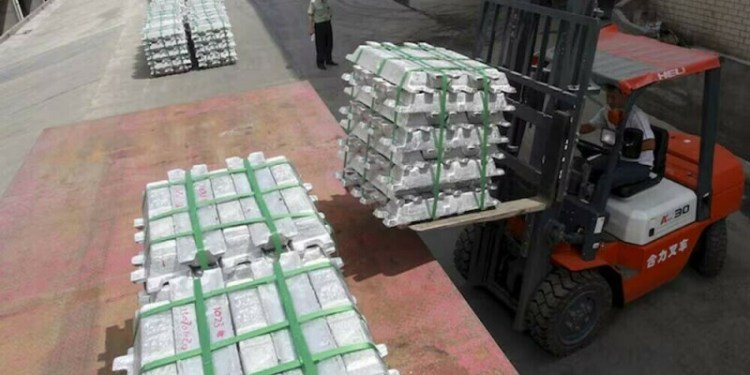China polypropylene prices began a remarkable rally in March, as strong demand from India and Southeast Asia buoyed CFR China prices and opened up an export window for Chinese domestic cargoes, industry sources said last week.
The CFR Far East Asia price of polypropylene raffia and injection grade surged $140/mt, or 14%, to $1,000/mt from the beginning to end of March, hitting a 7-month high, Platts data showed. The price was last at $1,000/mt CFR Far East on August 23, 2015.
Domestic China prices also surged Yuan 1,100/mt, or 14%, to Yuan 7,400/mt over the same period, an increase of about $146/mt on a US dollar import parity basis and in line with the CFR price.
The CFR South Asia and Southeast Asia PP raffia and injection markers, however, surged even more — $155/mt or 15% and $175/mt or 17%, respectively. Industry sources said strong PP demand in Vietnam and India, specifically, is driving the current rally in China.
Restocking activity in India in early March and in Southeast Asia mid-March, soaked up Middle East and India supply, market participants said, which meant less cargo available for China to import.
From China’s perspective, this trend was already well underway during January and February, with PP homopolymer imports from Saudi Arabia falling 42% year on year to about 64,000 mt and India falling 52% to 18,000 mt, according to China customs data.
January and February data are combined to smooth out distortions caused by the Lunar New Year seasonal holidays.
Reflecting the firmer demand in Southeast Asian markets, a Vietnamese trader said on Wednesday: “Local dealers have been caught flat-footed by the unexpectedly strong demand, with prices going up more than three weeks in a row, forcing them to limit stocks sold,” expecting prices to continue to rise in the near term.
Similarly, an Indonesia-based end-user said: “Local producers, even operating at full capacity, cannot supply all of Indonesia’s demands at the moment.”
Surging CFR South Asia (India) and Southeast Asia PP raffia and injection markers relative to China opened an export window for China’s domestic cargoes to flow into Vietnam, and to a lesser extent India during the last two weeks of March, major China-based trading companies noted.
On March 23, domestic prices was assessed up Yuan 300/mt week on week to Yuan 7,250/mt — about $1,028/mt on a calculated FOB China basis, whereas the CFR Southeast Asia marker was up $70/mt week on week at $1,050/mt.
Taking into account freight cost from China to Vietnam, estimated at about $10-$15/mt, the arbitrage from China to Vietnam is open, traders noted.
APRIL TURNAROUNDS TO TIGHTEN SUPPLY
March and April PP production in the Middle East has slowed by turnarounds.
UAE’s Borouge Petrochemical Complex at Ruwais, with a nameplate PP capacity of 1.76 million mt/year, shut its two polypropylene lines in February for repairs, then continued to operate at less than full capacity in March due to feedstock shortage, according to the company.
Oman ORPIC’s 360,000 mt/year PP plant is currently in the middle of a two-month turnaround to be completed end-April, which will lead to reduced allocations to China in March and April, according to sources.
At least three major April turnarounds in China will also reduce available domestic cargoes for the month, industry sources said.
Shenhua shut its coal-to-olefin integrated facility at Baotou city on April 1 for a 45-day turnaround, taking out 300,000 mt/year of PP capacity.
Sinopec shut its refinery and its integrated downstream units at Wuhan city in Hubei province on April 3 for a 45-day turnaround, including its 400,000 mt/year PP capacity. Zhangjiagang Yangtze River Petrochemical shut its 400,000 mt/year PP plant in Jiangsu province for a 20-day turnaround in early April.
These turnarounds represent more than 100,000 mt of unrealized production, meaning tighter PP supply in April for the China domestic market, potentially closing the export window to Southeast Asia in the short term.
WILL THE RALLY CONTINUE?
Current trend points to a continued rally of PP prices in China in Q2, as April turnarounds restrict domestic supply and strong demand from India and Vietnam limit supply from the Middle East to China. But China PP startups, which are expected to ramp up in earnest in the second half of the year, may cap the rally and lead to significant supply overhang, sources said.
Platts Petrochemical Analytics estimate that China’s domestic PP production for 2016 would increase 14.4% year on year to 17.9 million mt due to the new startups, while demand is expected to grow significantly slower at 5.4% over the same period to 20.3 million mt. This means net PP deficit is set to narrow to about 2.4 million mt, down more than 40% from 2015, assuming the startups proceed on schedule.
PP demand growth is expected to continue to slow down further in the coming years, as China transitions away from an investment-led economy towards a consumer-led economy, Platts Petrochemical Analytics’ Hetain Mistry, managing analyst, said during an interview March.
PP annual demand growth is forecast to slow to 5% by 2017, then 4.8% by 2018.
On the supply side, China is expected to complete up to 3.25 million mt/year of new capacity this year, a third of which will start by late Q2, industry sources said.
Coal-to-olefin integrated PP plants, which currently produce the lowest priced material in the domestic market, is expected to make up more than half of this new capacity.
Two notable CTO startups include: China Coal Mengda New Energy’s 300,000 mt/year plant in Inner Mongolia’s Ordos city, Shenhua Group’s 300,000 mt/year CTO plant in Xinjiang — both of which are slated to come online in Q2.
Barring delays, industry sources estimate it would take a month or two from start-up to a normal operational rate.

























